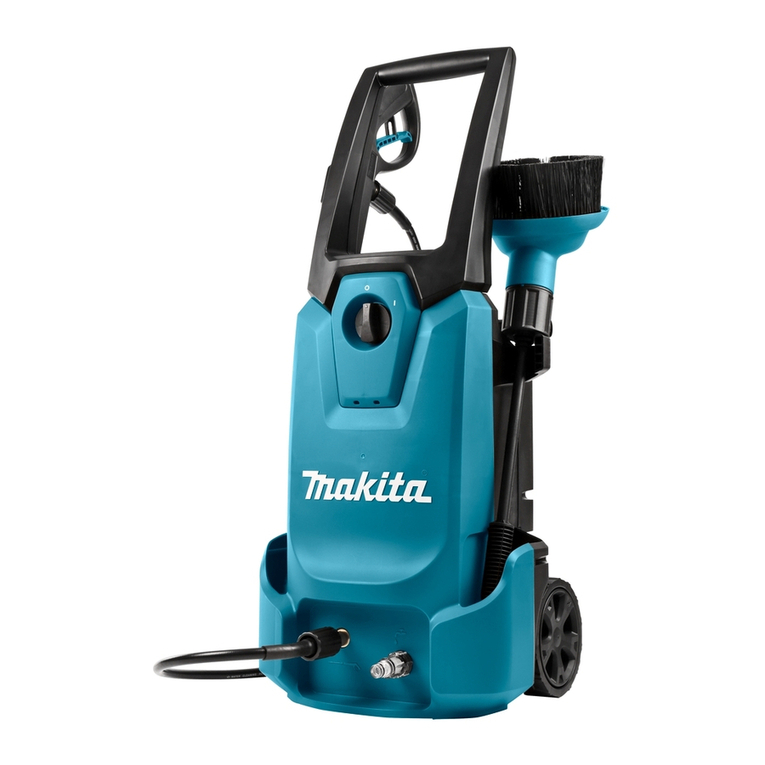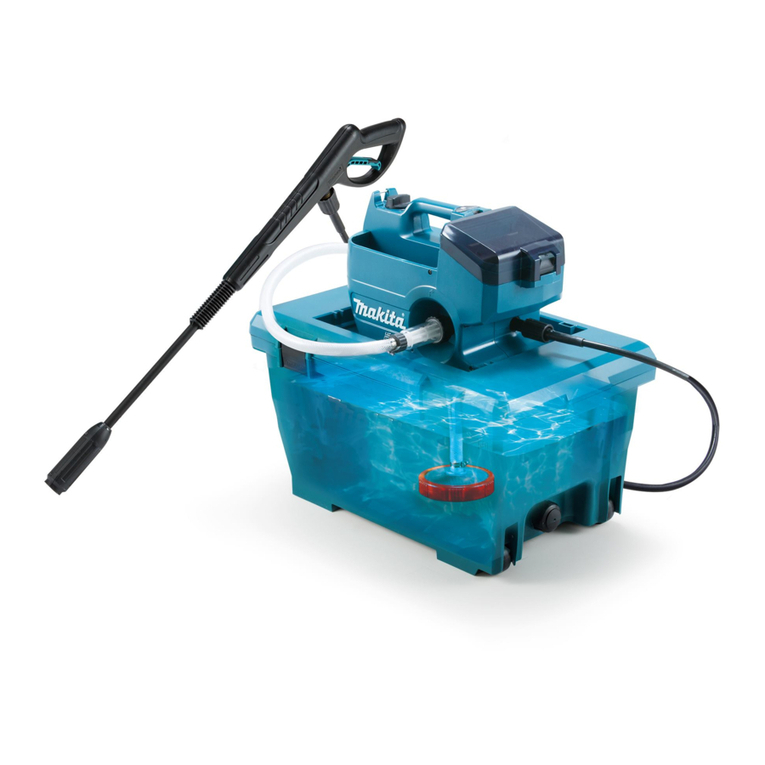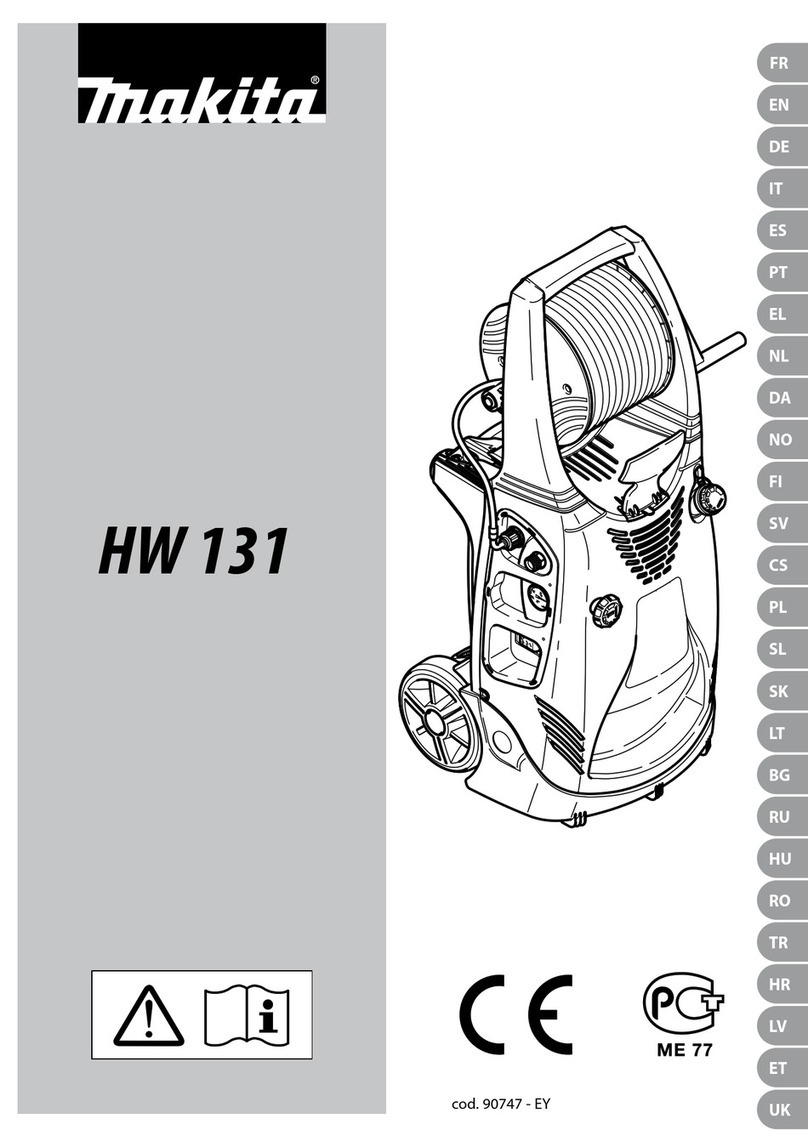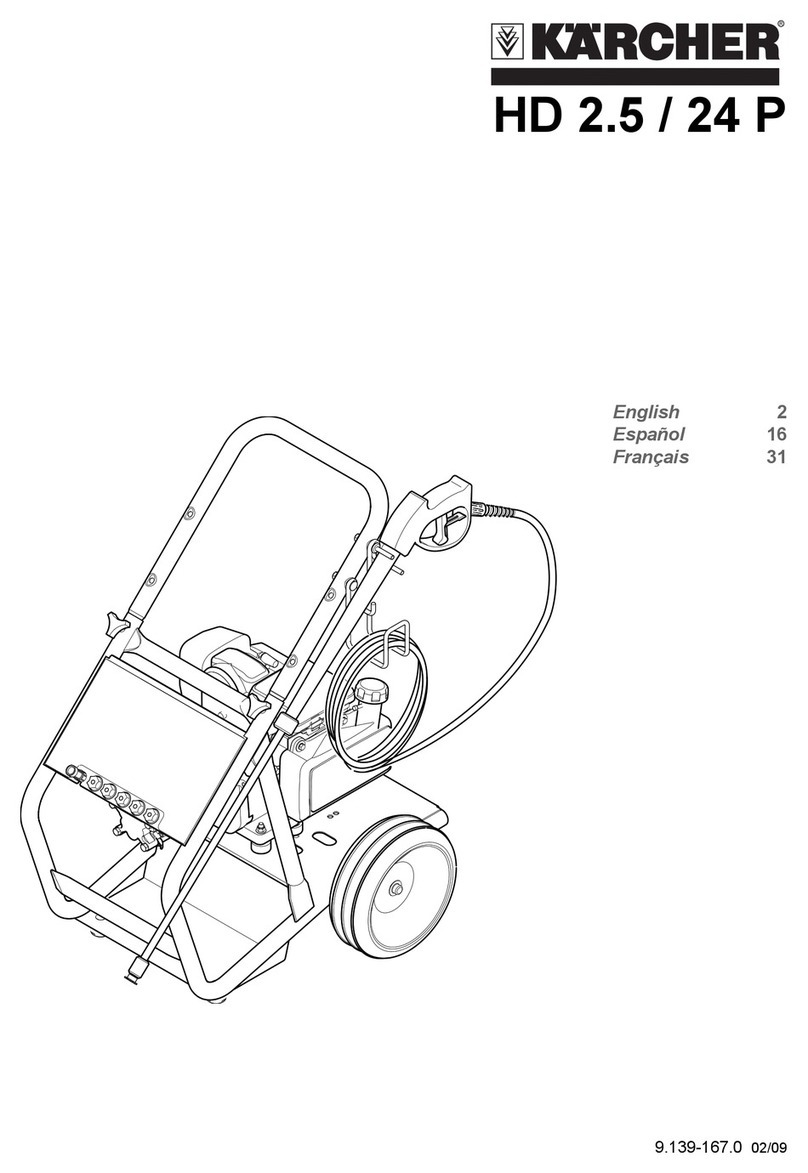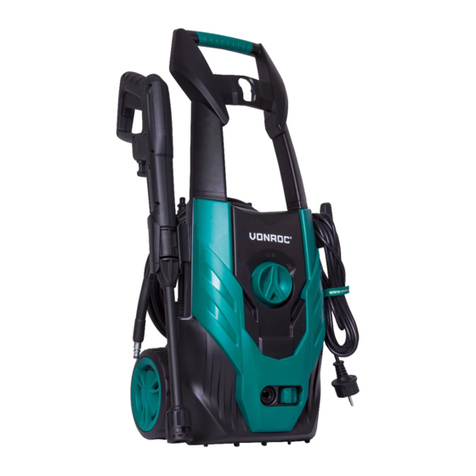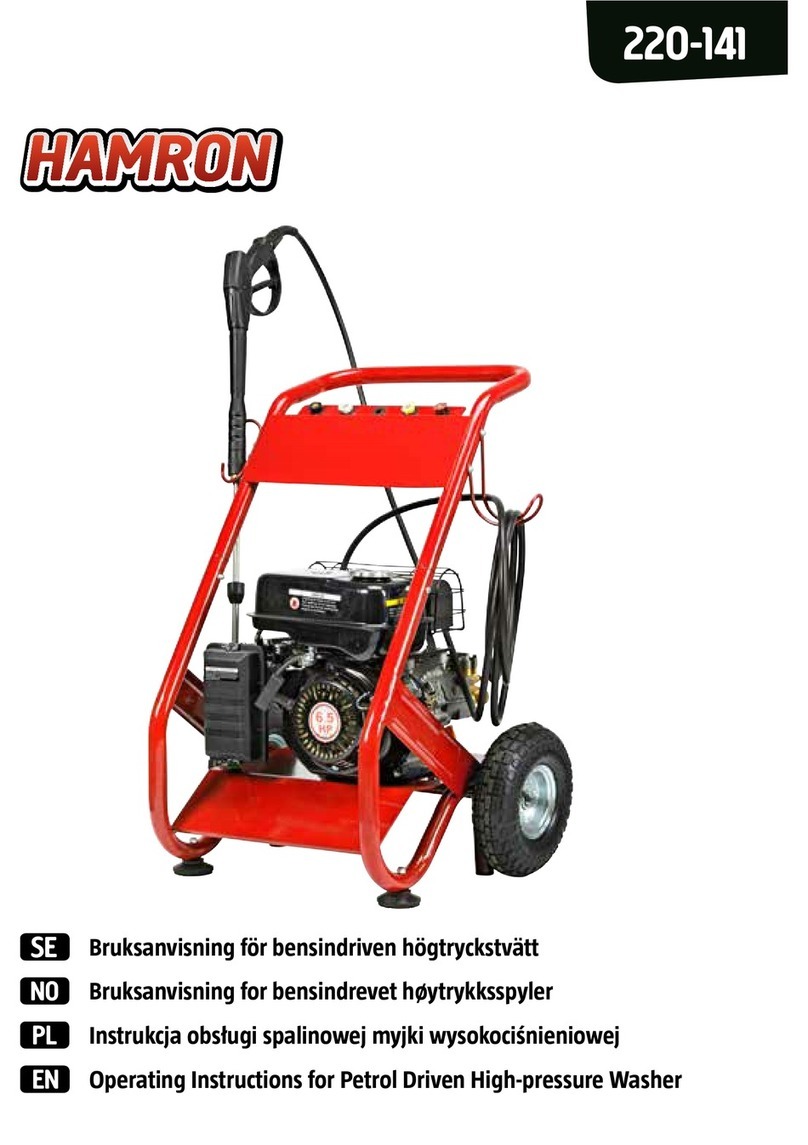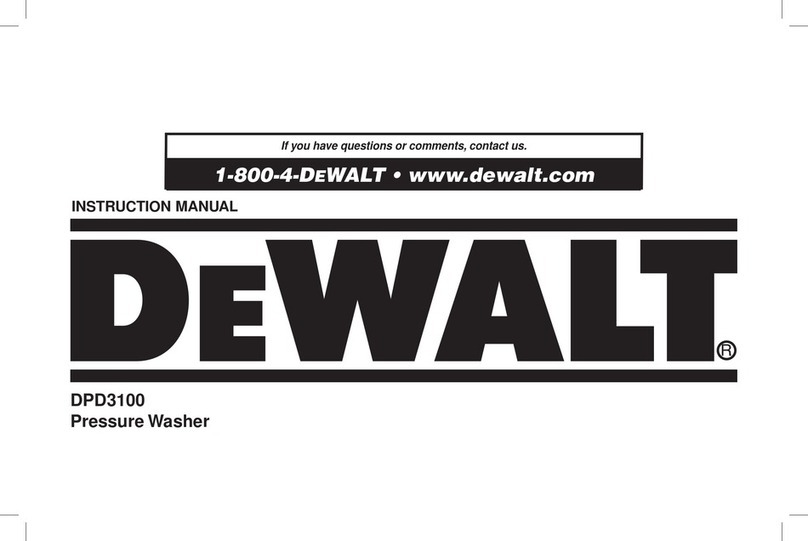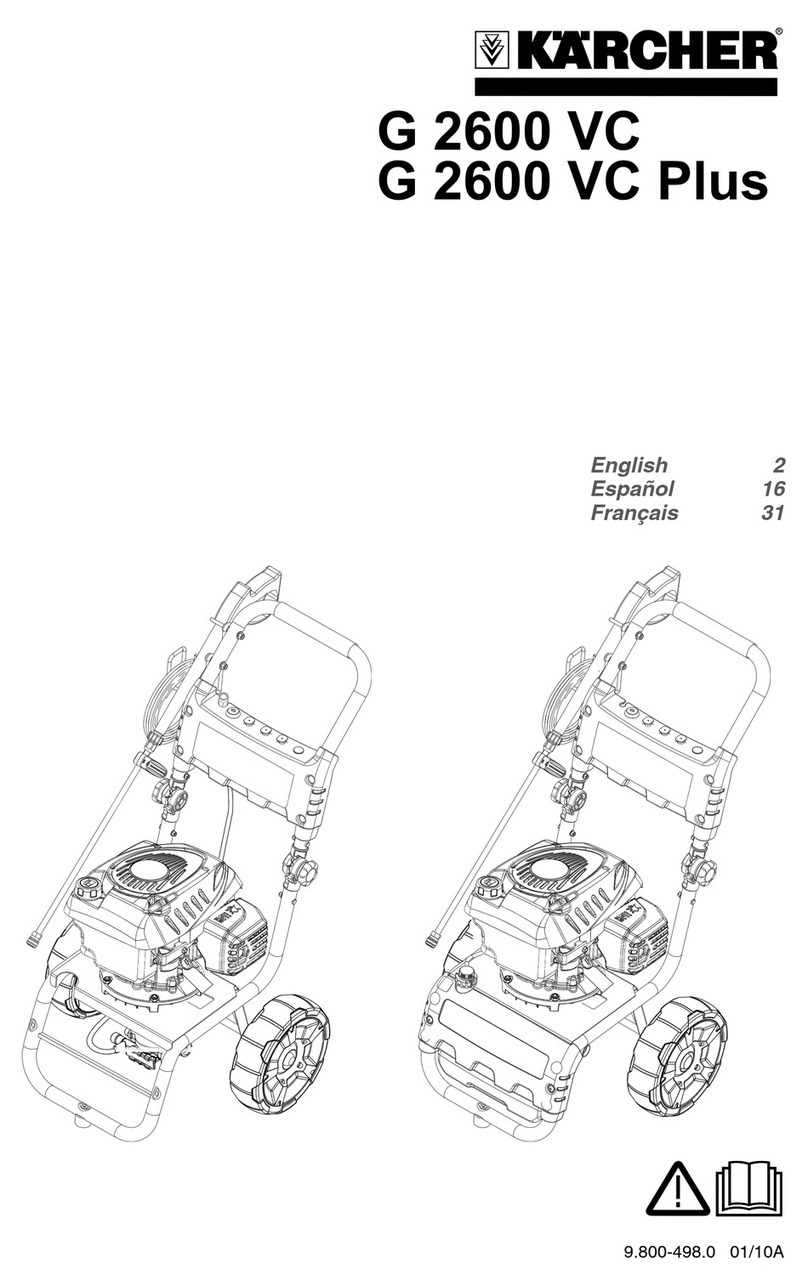
10 ENGLISH
ENGLISH (Original instructions)
WARNING
• Machines shall not be used by children. Children should be
supervised to ensure that they do not play with the machine.
• This machine is not intended for use by persons (including chil-
dren) with reduced physical, sensory, or mental capabilities, or
lack of experience and knowledge.
•
This machine has been designed for use with the cleaning agent sup-
plied or recommended by the manufacturer. The use of other cleaning
agents or chemicals may adversely affect the safety of the machine.
• High pressure jets can be dangerous if subject to misuse. The jet
must not be directed at persons, live electrical equipment or the
machine itself.
• Do not use the machine within range of persons unless they
wear protective clothing.
• Do not direct the jet against yourself or others in order to clean
clothes or foot-wear.
• Risk of explosion – Do not spray ammable liquids.
• High pressure cleaners shall not be used by children or
untrained personnel.
• High pressure hoses, ttings and couplings are important for the
safety of the machine. Use only hoses, ttings and couplings
recommended by the manufacturer.
• To ensure machine safety, use only original spare parts from the
manufacturer or approved by the manufacturer.
• Always be sure that the tool is switched off and battery cartridges
are removed before carrying out any work on the tool.
• Do not use the machine if important parts of the machine are
damaged, e.g. safety devices, high pressure hoses, trigger gun.
• Always remove the battery cartridges when leaving the machine
unattended.
•
Comply with the requirements of the local water supply company.
• For European countries:
According to EN12729 (BA), the appliance can also be con-
nected to the mains drinking water supply if a backow preventer
valve with drain facility is installed in the supply hose.



